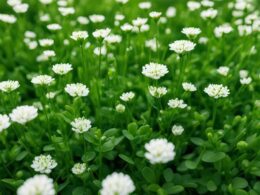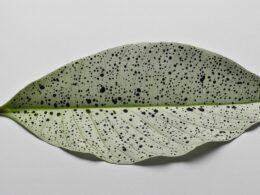Welcome to our Black Magic Elephant Ear care and tips guide! If you’re looking to nurture a bold display of foliage in your garden or containers, the Black Magic Elephant Ear is the perfect choice. With its stunning deep sultry purple-black leaves in a large heart shape, this plant is sure to make a statement in any space.
Caring for your Black Magic Elephant Ear is essential to ensure its health and vibrancy. Proper watering, sunlight, and nutrient balance are key factors in its care. We recommend watering the plant with 0.5 cups of water every 9 days if it is not exposed to direct sunlight and is potted in a 5″ pot. Placing it within 3 feet of a south-facing window will maximize its growth potential.
Fertilizing can be done once a year or when the plant doubles in size. This low-maintenance plant will reward you with its dramatic foliage without requiring excessive care.
Stay tuned for more tips on growing Black Magic Elephant Ear outdoors in our next section!
Tips for Growing Black Magic Elephant Ear Outdoors
If you want to grow your Black Magic Elephant Ear outdoors, it’s important to consider your USDA hardiness zone. This plant can be grown outdoors in USDA Hardiness Zones 8a-11b.
When planting outdoors, choose a location that offers dappled shade and make sure the soil is well-draining and rich in organic matter. This will provide the ideal growing conditions for your Black Magic Elephant Ear.
Propagation of the Black Magic Elephant Ear can be done through division. This involves separating the plant into new individual plants. You can do this when the plant first emerges in the spring or in the fall when removing tubers for overwintering.
Propagation Steps:
- Start by carefully lifting the plant from the ground and gently shaking off excess soil.
- Inspect the plant for natural divisions, where separate plantlets can be identified.
- Using a clean and sharp knife or garden shears, carefully divide the plant at the base of these divisions.
- Make sure each new division has a healthy root system and at least one or two leaves.
- Plant the new divisions in separate pots or directly into the garden, making sure to partially bury the tubers.
- Water the new plants thoroughly and continue to provide the right amount of sunlight and care.
By following these tips for growing Black Magic Elephant Ear outdoors, you can enjoy the bold and striking beauty of this stunning plant in your garden or landscape.
What are the Best Care Tips for Black Magic Elephant Ears Compared to Baby Rubber Plants?
When it comes to essential baby rubber plant care, consistent watering and indirect sunlight are crucial. For black magic elephant ears, maintaining a warm and humid environment is essential. Ensure the soil is well-draining and keep the plant away from cold drafts. Both plants thrive when given regular attention and care.
Overwintering and Troubleshooting Tips for Black Magic Elephant Ear
When it comes to overwintering your Black Magic Elephant Ear, there are a couple of options depending on your climate. In Zones 7b-10, you can simply cover the plants with mulch to protect them from the cold temperatures. However, in colder climates, it’s best to dig up the tubers and store them in a cool and dry place until spring. Once the soil starts to warm up, you can replant the tubers and enjoy their beauty once again.
Now, let’s talk about troubleshooting common issues with your Black Magic Elephant Ear. If you notice yellow leaves on your plant, don’t panic just yet. Yellow leaves can be a normal part of the plant’s life cycle, especially if older leaves are turning yellow. However, if all the leaves are changing color at once, it could be a sign of a problem. The most common issues are overwatering and root rot, which can be prevented by ensuring the soil is not too wet. Make sure the plant is in well-draining soil and adjust your watering schedule accordingly.
Pests can also be a concern when it comes to your Black Magic Elephant Ear. Spider mites are a common pest that can cause damage to the leaves. However, you can control them by using a strong stream of water to wash them off the leaves. Additionally, insecticidal soap can be effective in eliminating these pests. Remember to follow the instructions on the soap’s packaging for proper usage.









